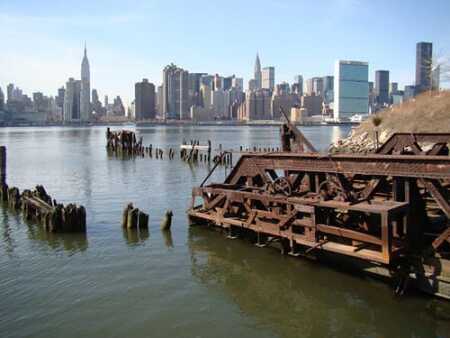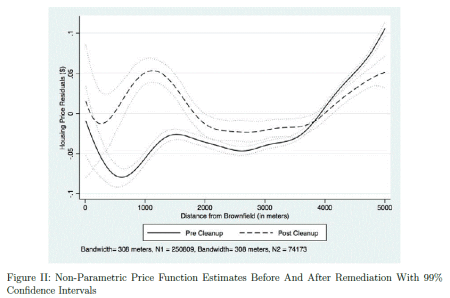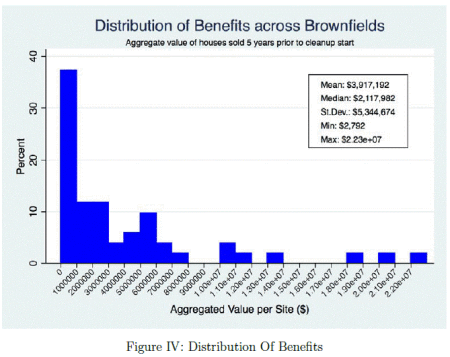Brownfields—defined by the U.S. Environmental Protection Agency (EPA) as properties whose use or development is hampered by the potential presence of hazardous substances, pollutants, or contaminants—often are not only a health risk to nearby residents, but also a drag on the local property market. These sites were once industrial or commercial properties, the use of which created some level of hazardous waste—anything from chemicals used in dry cleaning to former asbestos factories.
The EPA created the Brownfields Program in 1995, which distributes grants to both private and public organizations to help revitalize and make usable lower-risk brownfield sites. The costs of such a program are not trivial; according to the EPA, it costs an estimated average of $602,000 to clean up a brownfield, and there are 450,000 such sites nationwide, based on data from the U.S. General Accountability Office.
Related: Register for the Resilient City | Register for ULI Fall Meeting in NYC
The EPA grants provide $200,000 per chosen brownfield site, with the grantee being required to share at least 20 percent of the costs. Through fiscal year 2013, the program awarded 993 grants, for a total of $188.6 million.
According to The Value of Brownfield Remediation, a recent National Bureau of Economic Research paper by economists Kevin Haninger of the EPA, Lala Ma of the University of Kentucky, and Christopher Timmins of Duke University, the program has proved effective. By examining the change in property values around treated brownfield sites against untreated brownfield sites, the authors found that “averaging over the experiences at a nationally representative sample of brownfield properties, cleanup leads to housing price increases between 4.9 percent and 32.2 percent.”
This chart from the paper shows that price effect. Housing prices are substantially higher postcleanup than precleanup the closer properties are to the brownfield. This effect diminishes the further a property is from the brownfield site (at roughly 2.5 miles (4 km).
Even with use of the most conservative assumptions—the lowest potential price increase (4.9 percent), a small radius around the cleanup site (2,040 meters [6,700 ft]), and only using property value gain for homes that sold within five years prior to the start of the cleanup—the program more than pays for itself. The authors found the program garnered ". . . an average benefit value of $3,917,192 per site, with a median of $2,117,982. Although the smallest of our benefits estimate is below the estimated cleanup costs (17 of 51 brownfields have estimated benefits less than [the estimated cleanup cost of] $600,000), the benefits for the majority of the cleaned sites still far exceed the cost.”
The goal of the program is to revitalize brownfields in already “up-and-coming neighborhoods,” but even controlling for that, it appears that the neighborhoods around these sites have seen spillover effects, by improving both land use and aesthetics and, in turn, property values. Perhaps the program can stoke even more successful brownfield revitalization projects.







